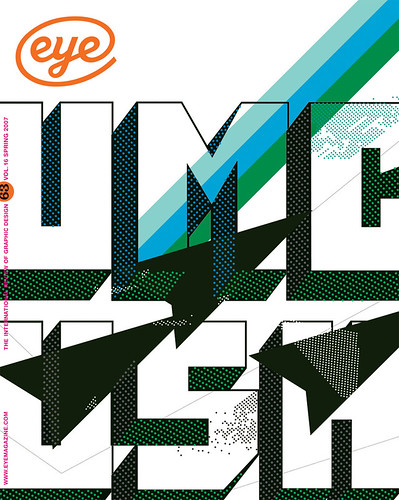Spring 2007
Delightful Precipice At The Edge Of Communicative Reality
Design’s Delight: Method and Means of a Dialogic Practice
By Jan van Toorn. <br>010 Publishers, €39.50 <br>In Dutch and English<br>Creating the impression that we are experiencing genuine change, while in actuality nothing has really altered, graphic design has often been the modus operandi of what the philosopher Slavoj Zizek once called ‘interpassivity’. Whether it is the constant re-branding of corporations, the re-issue of a literary classic with a new jacket, or the re-design of a website, one of the manifestations of interpassivity is the state in which re-design occupies the place of genuine transformations in the fabric of contemporary society. And by vicariously experiencing this, we are, so to speak, relieved of the duty to engage positively in actual acts of social and political change. If we wish to challenge this state, the first truly radical step is to withdraw and refuse to participate in this pretence. Yet, how does a designer ‘withdraw’? Surely, in a profession that is constantly preoccupied with the idea of producing something ‘different’ and ‘original’, this is unworkable?
Jan van Toorn disagrees. In Design’s Delight he calls on designers to challenge their contributions to the current world picture by considering a new way of practising their profession. Through a series of juxtapositions of image and text that prompt a deeper level of critical awareness, Design’s Delight offers an alternative way of designing. Rather than obscuring the power relations at work in the mediation of information, it seeks to undermine the dominant myths that frame our worldview. So, for example, alongside an image of immigrant labour on fields in Spain, Van Toorn includes a photo of Hui Liangyu, the Chinese vice-president in charge of poverty, who, a caption tells us, is shaking hands with the president of the World Bank. Such montages encourage a self-reflective profession (and viewer), a profession that has an inbuilt ‘operational critique’. Van Toorn’s idea of an operational critique ‘targets action’ and ‘the act of making and enabling others to action, the act of making and enabling others to act on the basis of its speculations and statements.’ As Van Toorn continues, such an approach ‘negotiates continuously in the force field of the relations of production about the space that it considers necessary for the questioning of its own position and the communication strategy with regard to the recipients.’ In an attempt to short-circuit ‘the integration of the consumer in the social regulatory mechanisms of the market’ he encourages the designer to intervene in the design process, to muddy the spectacle of late capitalism that has come to dominate the public sphere.
The work of Jürgen Habermas and the idea of a radicalised public sphere is a central concept in Van Toorn’s thinking. For Habermas, a truly democratic public sphere was one that was founded on a critical discourse in which all can participate equally, and in which the
only determining factor was the validity and strength of the argument. Drawing on the ideas of Habermas, Van Toorn wishes to critique the role designers have played in the continuing commodification of public discourse. Now is the time, he argues, for designers to challenge the increasingly ‘one-dimensional character of our symbolic environment’, to reveal the symbolic connections between the power structures and our experience of reality.
Sandwiched between Design’s Delight’s critical observations are Van Toorn’s own contributions to a design approach that seeks to reveal the contradictions at the heart of what he terms the late capitalist ‘communicative reality’. As noted, much of this is conveyed via a montage of glossy publicity shots that are combined with contrasting images or quotations that serve to impress upon the viewer ‘the complex relationships of socio-historical conditions’ that underpin the construction of our visual culture.
On a physical level, the way that the stitched bind is exposed along the spine is made part of this aim to reveal the underlying power relations at play in the construction of meaning. Lastly, Van Toorn’s desire to engender in the reader an active engagement with the ideas has lead him to position text and image at right angles, or upside down, which obliges the viewer to actively turn the book around when reading.
The ideas of change and trans-formation are easily drained of their radicalism. Capitalism would not have survived as long as it has, if it had not permitted a public sphere where questions are asked and movements are tolerated. More often than not, it has been graphic design that has anesthetised and neutered these radical ideas, sucking them dry until only the shell was left. Van Toorn now calls for a form of design that strives to reflect on design’s relation with the viewer, to generate a form of editorial design that engenders in the reader active engagement with the ideas expressed rather than a passive acceptance masquerading as genuine change. Van Toorn refuses to participate with design as it currently stands. It is a withdrawal that should be welcomed.
Kerry William Purcell, design historian, Tunbridge Wells
First published in Eye no. 63 vol. 16 2007
Eye is the world’s most beautiful and collectable graphic design journal, published quarterly for professional designers, students and anyone interested in critical, informed writing about graphic design and visual culture. It is available from all good design bookshops and online at the Eye shop, where you can buy subscriptions and single issues.

